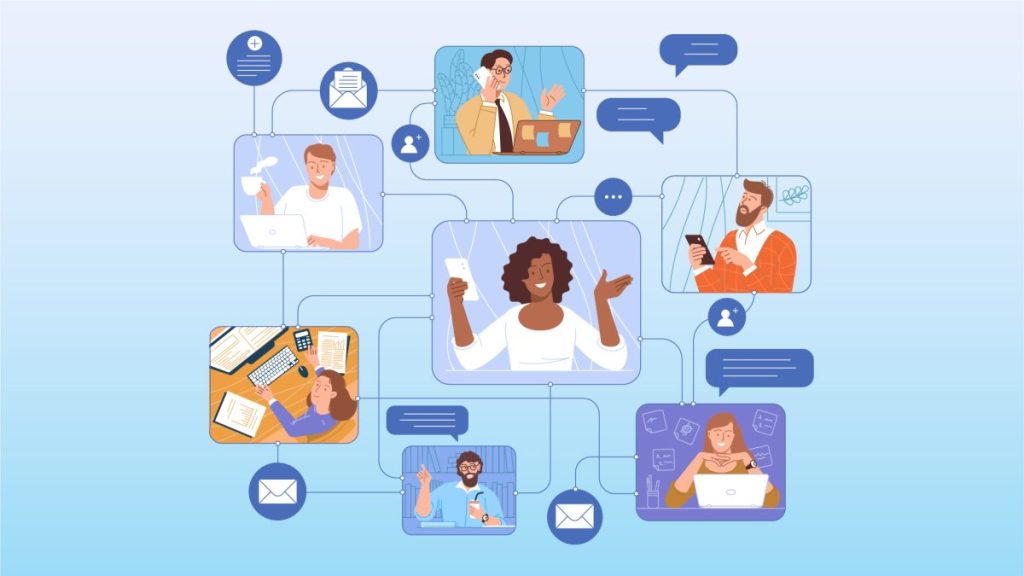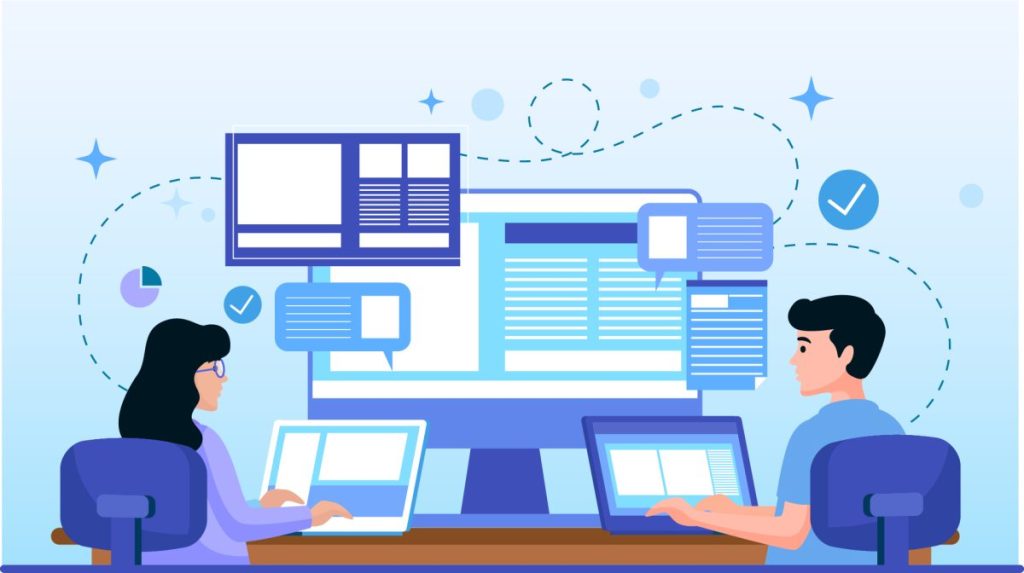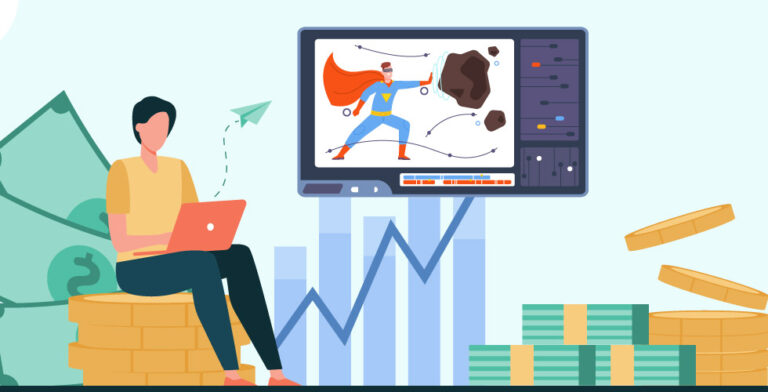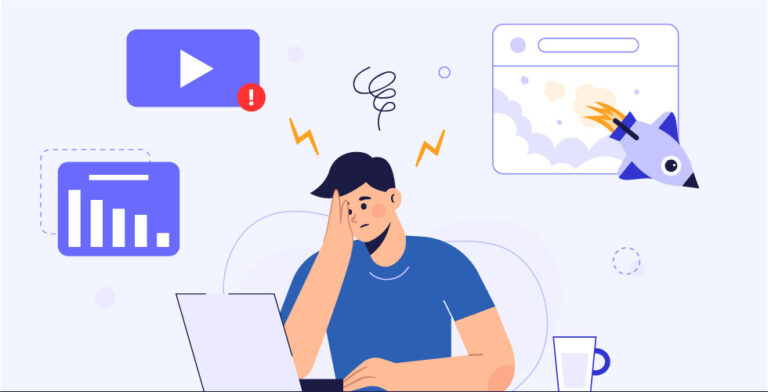Technology has transformed education in the 21st century. As learners and educators adapt to an increasingly digital landscape, there has been explosive growth in the educational technology (ed-tech) sector.
From collaborative apps to immersive simulations, ed-tech innovations aim to enhance comprehension, accessibility, engagement, and learning outcomes. Amidst this proliferation of cutting-edge tools, explainer videos have emerged as a versatile ed-tech solution uniquely suited to modern learners.
Educational explainer videos distill complex concepts into compelling animations with vivid visuals and clear narration. They cater to diverse learning preferences and help convey challenging ideas that form the foundation of many ed-tech products and services.
Compared to traditional teaching materials, explainer videos are more dynamic, engaging, and effective for technology-proficient generations.
As this promising format continues to gain traction, ed-tech developers can harness explainer videos to demonstrate their offerings, simplify abstract ideas, promote student comprehension, and get measurable learning impacts.
For learners, educators, and platform-builders alike, educational explainer videos harbor immense potential to shape the future of instructional technology. This potential is what the following sections will explore in depth.
Your Message
With Animation

Transform Your Message With Animation

Why Explainer Videos Are Perfect For Ed-Tech Industry
With digital transformation redefining education, explainer videos allow ed-tech products to flourish by leveraging visual learning and simplifying complex topics for modern, technology-fluent generations. Unlike static mediums, explainer videos use dynamic motion graphics, compelling narratives, and vivid animation to showcase platforms in an accessible way.
For ed-tech companies building innovative solutions, explainer videos have four key advantages:
Visual Learning Dominance
Humans process visual information 60,000 times faster than text. In other ways, visual elements are responsible for 90% of information transmitted to our brains. In fact, our brains are hard-wired to better understand concepts portrayed visually.
Explainer videos tap into this by using animated characters, flowcharts, diagrams, overlays, and other graphics to break down complex ideas frame-by-frame. Viewers grasp concepts intuitively as colorful visual elements come together on-screen.
Structured demonstrations also ensure key details are conveyed sequentially for better comprehension. Whether it’s showing geometric proofs, economics models, or grammar rules, explainer videos boost understanding and recall by letting students visualize what they’re learning.
Ed-tech products leverage this visual learning dynamism to showcase everything from math manipulatives to virtual science labs.
Complex Concepts Simplified
Many subjects like calculus, quantum computing, genomics, and machine learning involve advanced technical concepts or esoteric jargon. Trying to teach such topics using traditional lectures or static images has limited efficacy. The intrinsic complexity means key ideas get lost or diluted.
Explainer videos overcome this barrier by blending storytelling and motion graphics to provide an illuminating yet accessible lens. Scenes transition fluidly to emphasize connections between concepts.
Difficult topics become relatable using character-driven narratives and real-world metaphors. Reinforcing textual explanations with strong visuals also enhances understanding. The simplified, engaging format makes grasping multifaceted domains more intuitive.

Engaging the Digital Generation
Today’s students are digital natives who expect technology to enable bespoke learning pathways. Passively absorbing information conflicts with their interactive, hyperconnected existence. Hence ed-tech solutions must not just instruct but actively engage modern learners.
Here too, explainer videos deliver. Their bite-sized runtimes, vivid motion graphics, and novel scenarios align with adolescent attention spans and interests shaped by internet culture.
By seamlessly incorporating memes, gaming elements, and inclusive references, explainer videos enthrall young viewers. The Videos keep students hooked while revealing a subject’s essence. Blending education and entertainment fosters positive learning associations.
Adaptability Across Learning Styles
Learners have intrinsic differences in how they best absorb ideas. While some gravitate toward text, others prefer images, diagrams, or learning by doing. Explainer videos bridge these variations using multifaceted sensory inputs – striking visuals and animations, conversational audio voiceovers, subtle background music, and textual captions/cues.
This multi-channel assault ensures understanding regardless of someone’s learning style. Spatial learners intuit processes better through 2D and 3D representations. Auditory learners absorb information via engaging narration.
Kinesthetic learners relate better to scenarios depicting motion and real-world contexts. By speaking to these diverse preferences simultaneously, explainer videos enable ed-tech products to convey value in a personalized manner.
Benefits of Educational Explainer Videos
By harnessing visual learning and engagement, educational explainer videos empower students and maximize instructional efficiency across ed-tech solutions that improve comprehension, accessibility, and outcomes.
Enhanced Student Understanding
Well-designed educational explainer videos use visually-reinforced explanations to foster intuitive understanding of complex topics. Stepping through processes sequentially with complementary graphics and narration enables viewers to deeply comprehend key mechanistic links.
For example, an animation depicting cell division can spotlight each phase using integrated text callouts, pointer animations, zooms, and transitions between cycles.
This multifaceted approach boosts the grasping of intricate biological phenomena beyond what static images or dense text can achieve. Student comprehension increases as learners actively assimilate information across modalities.

Increased Engagement Levels
Compare an hour-long chalkboard lecture to a snappy, beautifully animated 3-minute video on the same chemistry lesson. By artfully blending graphics, music, characters, humor, and brevity, explainer videos are inherently more engaging and memorable. Students remain attentive as information unfolds dynamically, rather than tuning out a monotonous speaker.
Weaving in gaming elements and contemporary references also helps pique adolescent curiosity. This captivation translates directly into heightened retention as learners eagerly absorb material rather than passively receiving it. Higher enjoyment and involvement keep students engaged, leading to improved recall and application capabilities.
Accessibility and Flexibility
Explainer videos increase content accessibility in multiple ways. Visually conveyed narratives enriched by text cues aid differently-abled students. Integrated subtitles, adjustable playback speeds, and downloadable offline versions also make learning more inclusive.
Unlike scheduled lectures or rigid curriculums, students can access explainer video libraries 24/7 for just-in-time knowledge. Learners review difficult sections at their own pace based on individual needs. This flexibility allows broader dissemination across learning abilities and preferences.
Time Efficiency for Educators
High-quality educational explainer videos simplify and streamline content delivery for teachers as well. Developing traditional instructional materials and assessments is resource-intensive. By relegating simplified, visually engaging explanations to on-demand videos, educators gain back precious time.
Rather than repeatedly conveying the same foundational learnings manually, teachers can focus on higher-value skills like critical thinking development via project-based methods. This empowers more personalized guidance and progress monitoring for each student’s needs.
Measurable Impact on Learning Outcomes
Beyond qualitative efficiency gains, explainer video integration enables better quantitative tracking of student achievement across ed-tech solutions. Platforms can capture advanced analytics on video access patterns, completion rates, sections revisited, and correlated competency development.
Embedded quizzes, surveys, and downstream assessments also help quantify knowledge gains. A/B testing evaluation frameworks help optimize video designs and sequencing for maximized comprehension. Over time, data-driven feedback loops ensure continual content upgrading for better learning outcomes.
Future Trends and Innovations
As explainer video adoption expands, ed-tech innovators are incorporating immersive technologies like interactivity, personalization, and artificial intelligence to further boost engagement, outcomes, and accessibility.
Integration of Interactive Elements
Passive video consumption limits the instructional power of standard explainer formats. But adding interactive elements like tabs, hotspots, hover functionality, and hyperlinked content layers can make videos participatory.
For example, an engineering lesson could contain circuit diagrams with clickable components that trigger animations, equations, or design changes. Learners grasp relationships better as they actively manipulate variables and witness downstream impacts.
Gamifying knowledge checks with real-time feedback also motivates progress. As educational explainer videos increasingly integrate such features, student comprehension and recall strengthen thanks to participative experiences.
Personalized Learning Paths
Every student learns differently, yet traditional explainer videos offer little customization or recommendations to align with personal needs. By harnessing data analytics, ed-tech solutions can tailor video content, assessments, examples, and sequencing to match individual learning profiles.
A platform detecting a learner struggling with calculus graphs could serve explainer videos with more visual depictions, step-by-step workings, and applied problems. Conversely, advanced students may receive added theoretical content or multidimensional graphing challenges. Such adaptive learning fosters outcomes optimized to student abilities and interests.
Artificial Intelligence in Educational Videos
As artificial intelligence (AI) matures, it shows immense promise for enhancing explainer video versatility. AI algorithms can synthesize content dynamically rather than relying on predefined scripts.
Contextually-aware voiceovers, interactive 3D animations, and on-the-fly diagram generation can make videos more responsive. Chatbot video hosts tailored to viewer demographics and preferences can also make explanations highly relatable.
As research continues, AI-powered educational videos may someday even assess comprehension gaps and modify presentations accordingly! By enabling infinite permutations, AI brings explainer videos closer than ever to the personalized needs of every unique learner.
Wrapping Up
As the adoption of explainer videos in education continues rising, ed-tech innovators must leverage emerging technologies to further personalize and enhance the learning experience.
Immersive formats powered by interactivity, artificial intelligence, data analytics, and responsive instructional design can transform passive content consumption into bespoke self-directed learning. Students of all abilities and interests may finally access tailored education catered to their needs and preferences.
Your Message
With Animation

Transform Your Message With Animation

Though explainer videos have already begun reshaping instruction, the full potential is yet unrealized. By unifying great content with the appropriate medium, ed-tech solutions can ultimately empower students to navigate a digitally enhanced education ecosystem of immense possibility and promise.
The stage is set for pioneers to unleash the next generation of responsive, adaptive, and student-centered learning tools.






